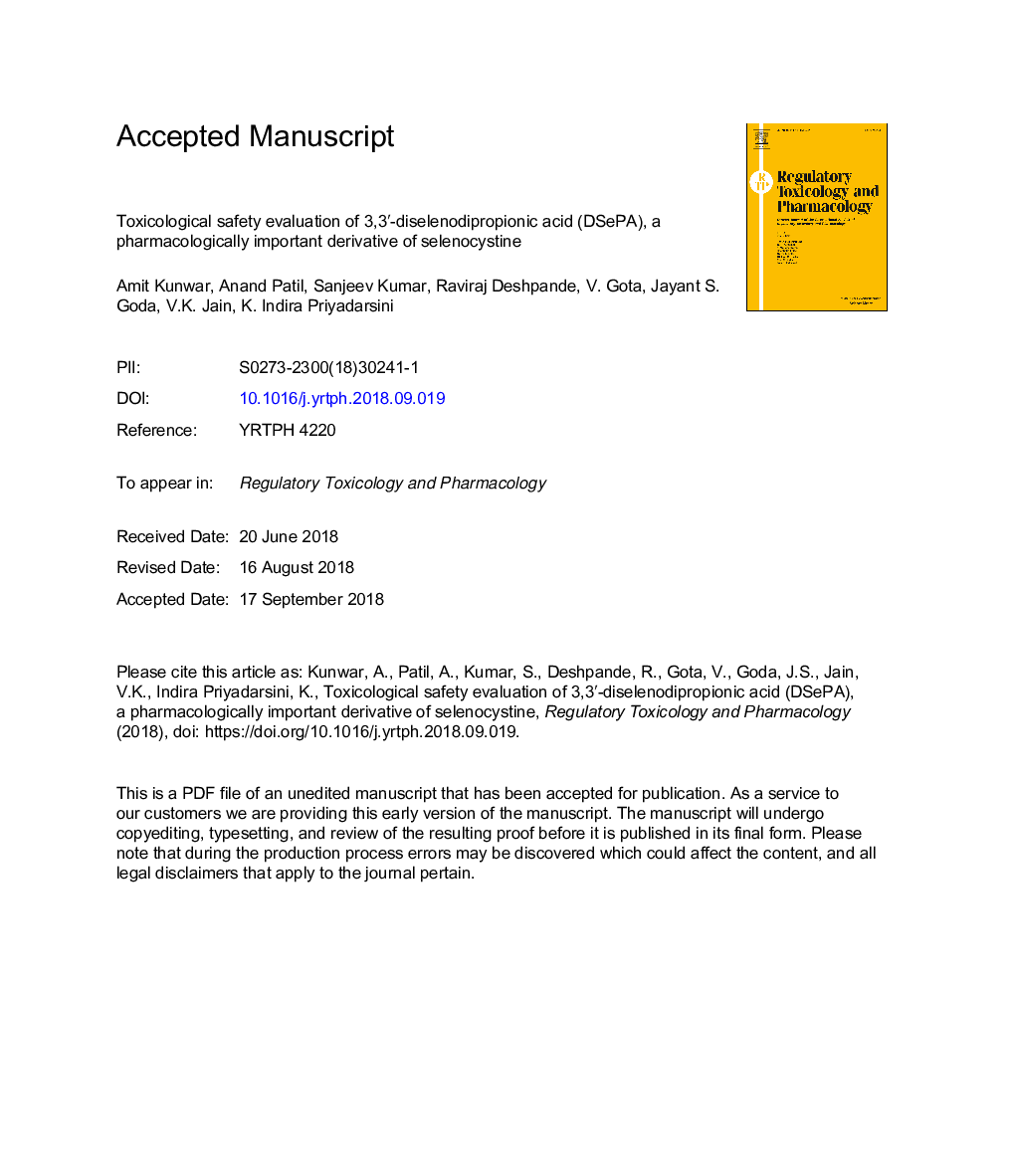| Article ID | Journal | Published Year | Pages | File Type |
|---|---|---|---|---|
| 11031868 | Regulatory Toxicology and Pharmacology | 2018 | 32 Pages |
Abstract
Diselenodipropionic acid (DSePA), a pharmacologically important derivative of selenocystine was evaluated for acute toxicity, mutagenic safety and metabolic stability. The estimated median oral lethal dose (LD50) cut-off of DSePA in mice and rat models was â¼200â¯mg/kg and â¼25â¯mg/kg respectively, which is considerably higher than the reported oral LD50 dose of its parent compound. Subsequently DSePA treatment in absence and presence of rat liver S9 fraction was found to be non-mutagenic at the tested doses up to 1â¯mM in rifampicin resistance assay and up to 6â¯mM in Ames test. In vitro degradation studies indicated that DSePA was more stable in S9 fraction of human compared to rat. The kinetic parameters Km and Vmax of DSePA degradation estimated using rat S9 fraction was 9.81â¯Î¼M and 1.06â¯nmol/ml/min respectively. Further, DSePA treatment (1-50â¯Î¼M) with or without rat S9 fraction did not induce any toxicity in human intestinal epithelial cells (Int 407) while showing comparable bioactivity of glutathione peroxidase (GPx) level. In conclusion, superior metabolic stability of DSePA in human S9 fraction with a concomitant lack of mutagenic effects suggests that it may be a suitable derivative of selenocytine for future biological studies.
Related Topics
Life Sciences
Environmental Science
Health, Toxicology and Mutagenesis
Authors
Amit Kunwar, Anand Patil, Sanjeev Kumar, Raviraj Deshpande, V. Gota, Jayant S. Goda, V.K. Jain, K. Indira Priyadarsini,
